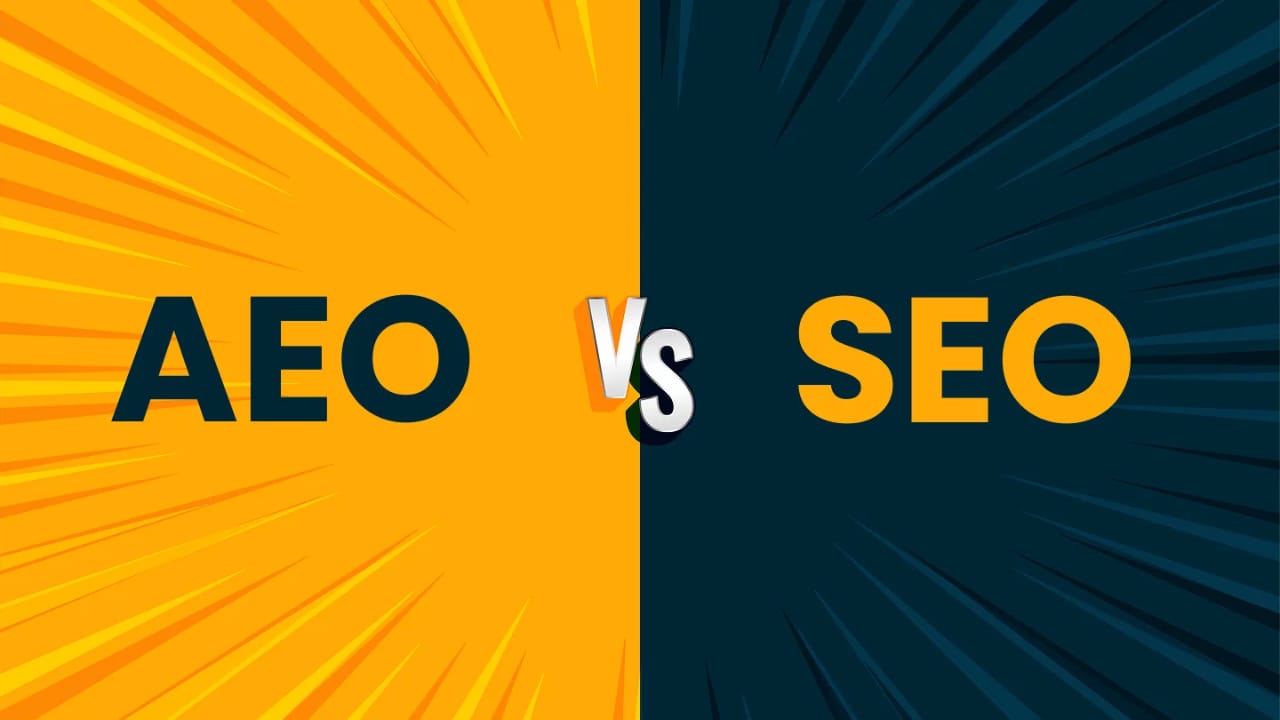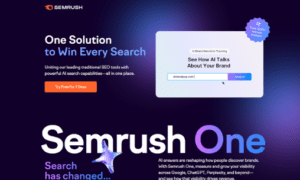With AI entering almost every industry and disrupting traditional ways of marketing, it has become a mandate for every business to adapt to AI and in the search industry its AISEO now.
Did you know that a McKinsey report projects AI summaries will appear in 50% of Google searches in 2025, with estimates suggesting up to 80% of searches involving AI-driven results by year-end, rising to over 75% by 2028?
The search landscape is undergoing a seismic shift, moving away from traditional search engine results pages (SERPs) toward AI-powered, instant-answer experiences. As artificial intelligence reshapes how users find information online, businesses must pivot to stay visible.
Enter Answer Engine Optimization (AEO) a new frontier that’s rapidly overtaking traditional Search Engine Optimization (SEO).
In this article, we’ll compare SEO and AEO, highlight their key differences, explore why AI search is transforming digital marketing, and provide actionable steps to prepare your website for AI-driven success in 2025. Whether you’re a business owner, marketer, or content creator, adapting to AEO is no longer optional; it’s essential.
Understanding SEO and AEO
What is SEO?
Search Engine Optimization (SEO) is the practice of optimizing websites to rank higher on search engine results pages, like Google or Bing. It’s built on strategies like keyword research, link building, technical website improvements, and creating relevant content to drive organic traffic. For years, SEO has been the backbone of digital marketing, helping businesses attract clicks and boost visibility.
What is AEO?
Answer Engine Optimization (AEO) takes optimization a step further, focusing on delivering concise, accurate answers for AI-driven search engines and virtual assistants like Siri, Alexa, or Google’s AI Overviews. AEO prioritizes user intent, conversational queries, and structured data to ensure content appears in featured snippets, voice search results, or AI-generated summaries. Unlike SEO’s focus on clicks, AEO aims to satisfy queries instantly, often without users visiting a website.
The Shift to AI Search
AI search engines leverage natural language processing (NLP) and machine learning to understand context and deliver precise answers and many teams now rely on the best AI search analytics platform to track how these AI systems interpret and surface their content. With tools like Google’s BERT and MUM algorithms, search engines are getting smarter, prioritizing user intent over keyword matching. This shift means websites must adapt to provide direct, high-quality answers to stay relevant in 2025’s AI-driven ecosystem.
Key Differences Between SEO and AEO
To understand why AEO is critical, let’s break down how it differs from traditional SEO:
Objective
- SEO: Drives traffic to websites by securing high rankings on SERPs, encouraging users to click through.
- AEO: Provides immediate answers for AI queries, often in zero-click formats like featured snippets or voice search responses.
Content Approach
- SEO: Relies on keyword-dense, long-form content and backlinks to build authority and relevance.
- AEO: Emphasizes concise, intent-driven content that directly answers questions, optimized for conversational queries.
Technical Requirements
- SEO: Focuses on meta tags, site speed, mobile-friendliness, and crawlability to improve rankings.
- AEO: Leverages structured data (e.g., Schema.org markup), semantic HTML, and NLP-friendly content to help AI engines interpret and display information.
User Experience
- SEO: Aims to increase click-through rates and time spent on a website.
- AEO: Prioritizes delivering answers in conversational formats, often bypassing the need for website visits.
These differences highlight a fundamental shift: while SEO focuses on visibility and traffic, AEO is about precision and instant value.
Why AI Search is Reshaping Digital Marketing
Changing User Behavior
Today’s users expect instant answers. With the rise of voice search (used by over 40% of internet users monthly, according to recent studies) and AI assistants like Alexa and Google Assistant, people are asking questions conversationally, “What’s the best coffee shop near me?” or “How do I optimize my website for AI search?” These queries demand quick, accurate responses, often delivered without a click.
Impact of AI Technologies
AI advancements like Google’s BERT (understanding context) and MUM (multimodal search) are transforming how search engines process queries. In 2025, AI-generated summaries and featured snippets will dominate results, with McKinsey projecting AI summaries in 50% of Google searches this year, potentially reaching 80% in broader AI-driven formats. This means websites must be optimized to provide clear, structured answers to appear in these high-visibility spots.
Competitive Advantage
Early adopters of AEO gain a significant edge. For example, e-commerce sites optimizing for “best product” queries can land in AI-generated comparison lists, while local businesses can dominate voice search results for “near me” queries. By aligning with AI search trends, you position your website to capture attention in a crowded digital landscape.
Actionable Steps to Transition Your Website for AEO Success
Ready to adapt your website for AI search in 2025? Here are five actionable steps to implement AEO effectively:
- Optimize for User Intent
- Research conversational and long-tail keywords using tools like AnswerThePublic or Google’s “People Also Ask” section.
- Create FAQ-style content that directly addresses common questions (e.g., “What is AEO in digital marketing?”).
- Focus on answering “who,” “what,” “where,” “when,” “why,” and “how” queries to align with AI search patterns.
- Implement Structured Data
- Use Schema.org markup to help AI engines understand your content. For example, apply FAQ, How-To, or Product schemas to relevant pages.
- Test your structured data with Google’s Structured Data Testing Tool to ensure proper implementation.
- Structured data increases your chances of appearing in featured snippets or AI summaries.
- Focus on Conversational Content
- Write in a natural, conversational tone to match voice search queries (e.g., “Hey Google, how do I optimize for AEO?”).
- Use question-based headings (e.g., “Why is AEO important in 2025?”) and concise bullet points for scannability.
- Keep answers short and direct, aim for 40-60 words for featured snippet eligibility.
- Enhance Technical Performance
- Ensure your website is mobile-friendly, as AI assistants often serve mobile users.
- Optimize site speed (aim for under 2 seconds load time) to improve crawlability for AI bots.
- Use clean, semantic HTML to make content easily interpretable by AI algorithms.
- Monitor and Adapt
- Track AEO performance using tools like Google Search Console to monitor featured snippet rankings and voice search visibility.
- Analyze competitors’ AEO strategies to identify gaps and opportunities.
- Stay updated on AI search algorithm changes (e.g., Google’s AI Overviews updates) and adjust your approach accordingly.
The search landscape is evolving rapidly, with AI-driven results projected to dominate up to 80% of searches in 2025, according to industry estimates. While traditional SEO remains valuable, AEO is the key to staying visible in an AI-powered world. By understanding the differences between SEO and AEO, embracing AI search trends, and implementing the actionable steps above, you can future-proof your website for 2025 and beyond.
Ready to make the shift?
Audit your website for AEO readiness today and explore more insights from a leading Digital Marketing Agency Chennai. Stay ahead of the curve and thrive in the AI search era!





























